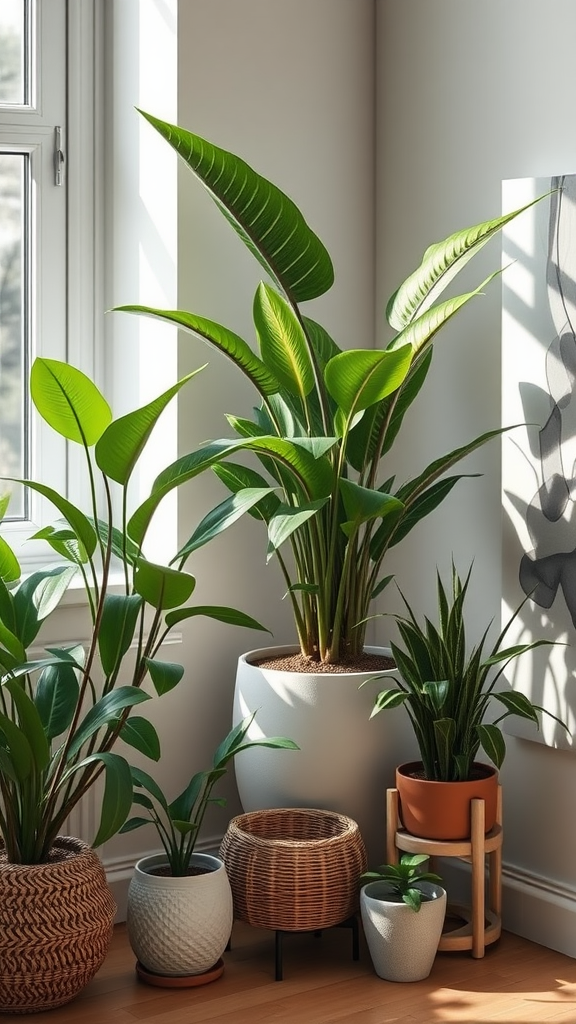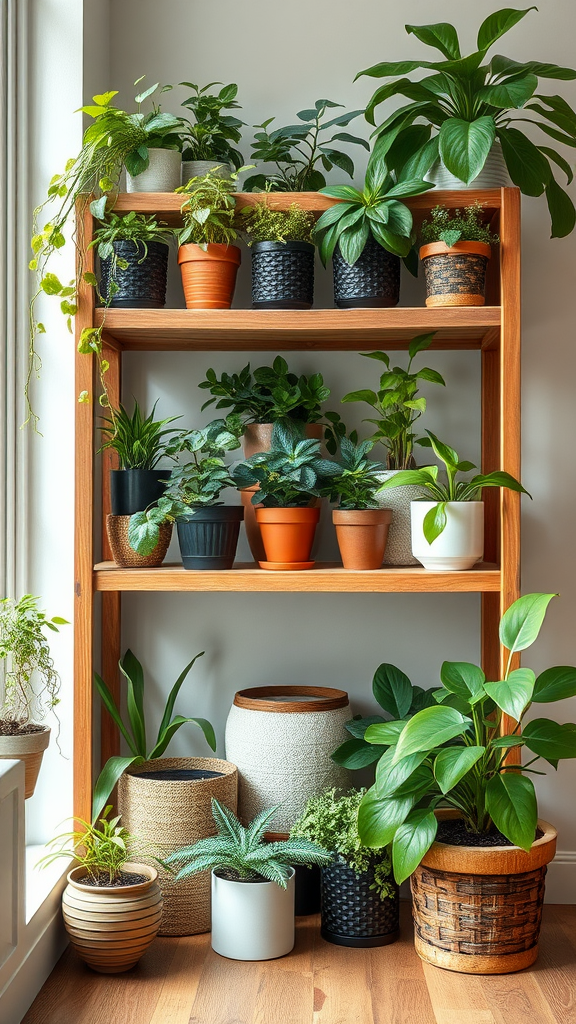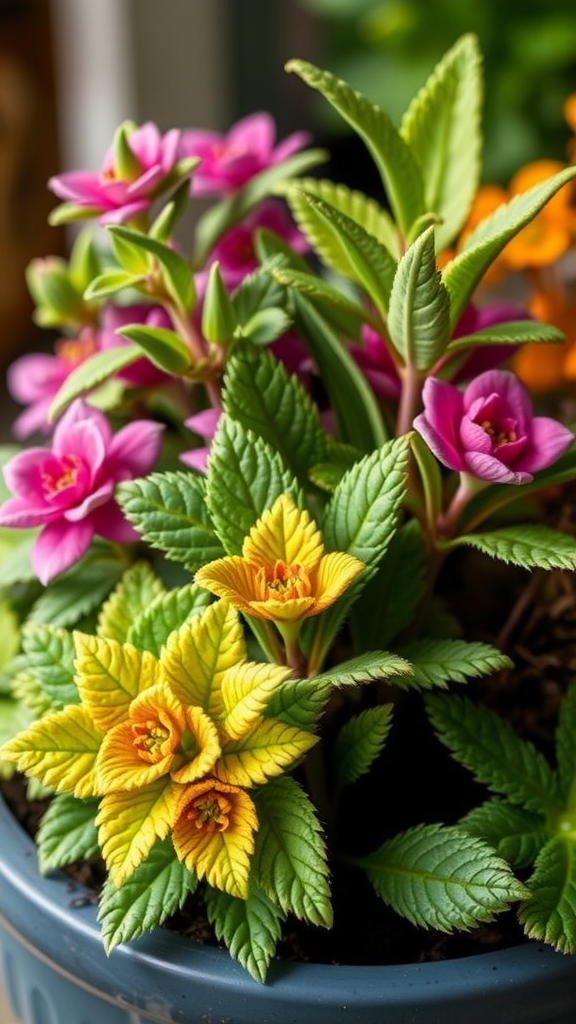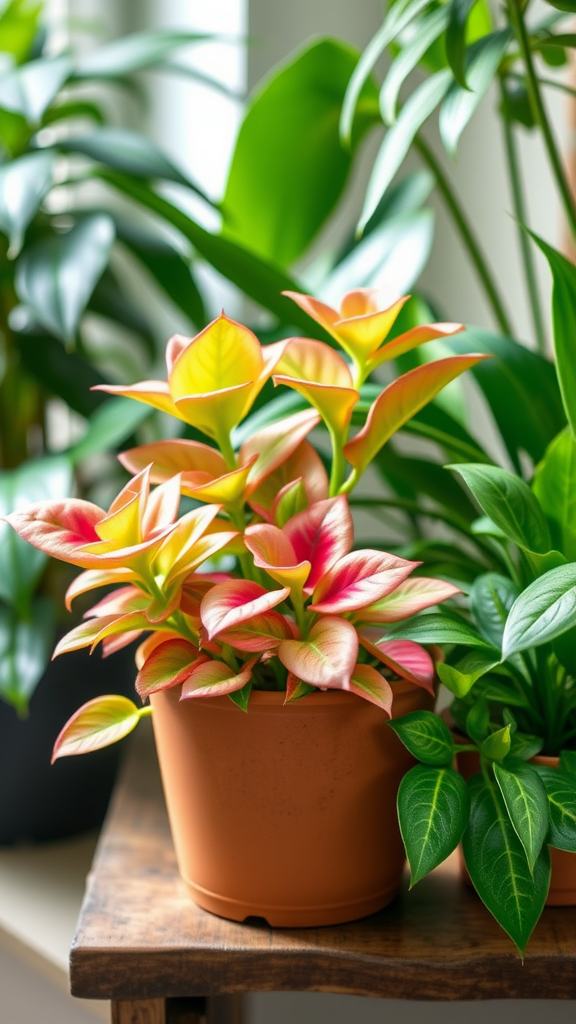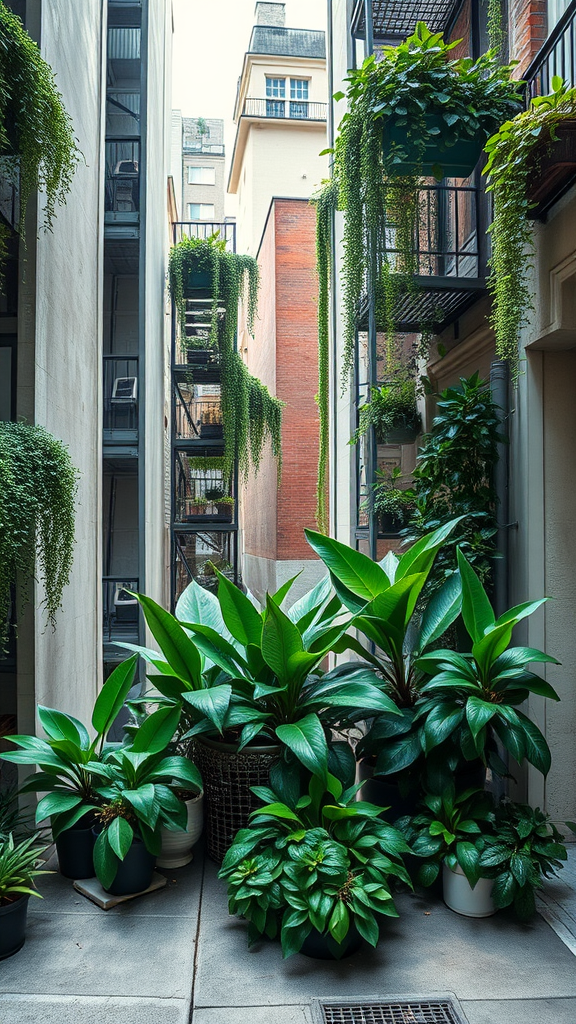The Best Indoor Plants That Bring Life to Every Room
Adding indoor plants to your space can transform it into a lively oasis. Not only do they enhance the aesthetic appeal of your rooms, but they also improve air quality and provide a sense of calm. Here are some of the best indoor plants that bring life to every room.
1. Snake Plant (Sansevieria)
The snake plant, also known as mother-in-law’s tongue, is an excellent choice for beginners. This hardy plant can thrive in low light and requires minimal watering. Its tall, upright leaves create a striking visual element, making it suitable for any room, from living areas to bedrooms.
2. Peace Lily (Spathiphyllum)
Known for its beautiful white blooms and glossy green leaves, the peace lily is not just attractive; it’s also a champion at purifying the air. Place it in medium to low light for best results. Just be sure to water it when the soil feels dry, and it will bring life and color to your space.
3. Pothos (Epipremnum aureum)
Pothos, commonly referred to as devil’s ivy, is one of the easiest indoor plants to grow. Its trailing vines can be displayed in hanging pots or on shelves, adding an appealing lushness to your room. Pothos thrives in a variety of lighting conditions, making it perfect for any space!
4. Spider Plant (Chlorophytum comosum)
With its arching leaves and playful baby plant “pups,” the spider plant is a fun addition to any room. It’s particularly good for improving indoor air quality and can adapt to different light levels. Whether on a shelf or in a hanging basket, the spider plant adds a lively touch.
5. ZZ Plant (Zamioculcas zamiifolia)
If you’re looking for a low-maintenance plant, the ZZ plant is ideal. With its glossy, dark green leaves that resist overwatering, this plant can thrive even in low light conditions. It adds a sophisticated touch to your office or living room.
6. Rubber Plant (Ficus elastica)
The rubber plant boasts large, glossy leaves that create a dramatic and stylish look. It prefers bright, indirect light but can adapt to lower light levels. Not only does it make a beautiful statement piece, but it also helps purify the air.
7. African Violet (Saintpaulia)
If you want to add a splash of color to your space, consider the African violet. Its delicate flowers bloom in shades of purple, pink, or white, brightening up any room. An ideal choice for windowsills or tables, this plant requires moderate light and consistent moisture.
8. Boston Fern (Nephrolepis exaltata)
Boston ferns are lush and feathery, making them a perfect choice if you want to create a calming atmosphere. They thrive in humid environments, which can be achieved in bathrooms or kitchens. Regular misting will keep the leaves vibrant and healthy.
9. Dracaena
Dracaena plants come in many varieties, each with unique colors and textures. These plants are easy to care for and thrive in both bright or low light. Their tall stature can fill empty corners in your room, creating an inviting and warm space.
10. Fiddle Leaf Fig (Ficus lyrata)
The fiddle leaf fig has become a popular indoor tree, known for its large leathery leaves. This plant prefers bright, indirect sunlight and needs to be watered when the top inch of soil is dry. Its dramatic presence can make a statement in any room, from the living room to a spacious entryway.
Indoor plants into your space not only enhances the aesthetic, but it also improves your well-being. Make sure to choose plants that fit your lifestyle and the specific conditions of your home. With so many options available, you can easily find the perfect plants to bring life into every room! Start your green journey today!
Tips for Caring for Indoor Plants to Enhance Your Home Environment
Caring for indoor plants is a rewarding and fulfilling activity that can enhance your home environment greatly. Having greenery inside your home not only adds beauty but also helps improve air quality and creates a sense of tranquility. Here are some essential tips to keep your indoor plants thriving.
Understand Your Plant’s Needs
Each type of indoor plant has its specific needs for light, water, and humidity. Research the plants you own or plan to buy to understand their requirements. Here are some common categories:
- Low Light Plants: Snake plants and pothos do well in areas with little sunlight.
- Bright Light Plants: Succulents and cacti thrive in direct sunlight.
- Humidity-Loving Plants: Ferns and peace lilies prefer a more humid environment.
Watering Wisely
Overwatering is one of the most common mistakes made by indoor plant owners. Water your plants when the top inch of soil feels dry. When you do water, ensure that it reaches the roots by allowing the water to flow through the drainage holes. Avoid letting your plants sit in water, as this can lead to root rot.
Provide Adequate Light
Proper lighting is crucial for your plants’ growth. Position your plants where they can receive appropriate light according to their needs. Use sheer curtains to diffuse bright sunlight for sensitive plants. If natural light is limited, consider using grow lights to supplement their needs. These lights can help simulate sunlight and promote healthy growth.
Maintain Humidity
Many indoor plants thrive in humid conditions. If you live in a dry climate, consider these methods to increase humidity:
- Group plants together to create a mini humid environment.
- Use a pebble tray filled with water under the pots to maintain moisture.
- Mist the leaves regularly, especially in winter when indoor air tends to be dry.
Fertilize Occasionally
Feeding your indoor plants with the right nutrients is essential, especially during the growing season, which is typically spring and summer. Use a balanced, water-soluble fertilizer every 4-6 weeks. Follow the instructions on the fertilizer label for the best results. Remember, less can often be more; over-fertilizing can harm your plants.
Repot When Needed
Over time, your plants may outgrow their pots. Signs that it’s time to repot include roots showing through drainage holes or water not soaking in. Choose a pot that is 1-2 inches larger in diameter and fill it with fresh potting soil. This change provides your plants with more space to grow and access to fresh nutrients.
Regularly Check for Pests
Pests can be a big threat to your indoor plants. Regularly check your plants for any signs of insects or disease. Common pests include spider mites, aphids, and mealybugs. If you spot any, treat them immediately with natural remedies like neem oil or insecticidal soap to prevent further damage.
Prune Dead Leaves and Flowers
Maintaining the appearance and health of your plants includes regular pruning. Remove dead or yellowing leaves and spent flowers to encourage new growth. This practice enhances airflow and prevents the spread of disease. Use clean, sharp scissors to make clean cuts and avoid stressing the plant.
Keep Your Plants Clean
Dust can accumulate on the leaves of your plants, making it hard for them to absorb sunlight. Regularly wipe the leaves with a damp cloth to keep them clean. This will not only make your plants look better but will also help them thrive in their environment.
By following these simple yet effective care tips, you can transform your living space into a lush green oasis. Whether you’re a novice or a seasoned plant lover, these practices will ensure that your indoor plants remain vibrant and healthy for years to come. Enjoy the beauty and benefits that indoor plants can bring to your home!
Conclusion
Transforming your living space with indoor plants is a wonderful way to bring life, color, and vitality into every room of your home. As we’ve explored the best indoor plants, it’s clear that each variety offers unique benefits, from air purification to adding a touch of nature’s beauty. Whether you’ve selected robust snake plants, vibrant pothos, or elegant peace lilies, each plant can enhance the ambiance of your rooms while reflecting your personal style.
Caring for these indoor plants is crucial to ensuring they thrive and continue to enhance your home environment. By following simple care tips, such as understanding light requirements, watering schedules, and general maintenance, you can create a flourishing indoor garden that not only beautifies but also nurtures your well-being. Remember, the right care can extend the life of your plants, keeping your space fresh and inviting for years to come.
As you embark on your journey of greening your indoor spaces, embrace the joy that comes from nurturing these living entities. The rewards of indoor gardening go beyond aesthetics; they promote mental clarity, reduce stress, and enhance the overall quality of life within your home. So go ahead, pick out your favorite indoor plants, give them the care they need, and watch as they transform your living environment into a tranquil and lively oasis that you—and your guests—will love.

